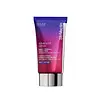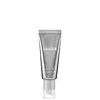What's inside
What's inside
 Key Ingredients
Key Ingredients

 Benefits
Benefits

 Concerns
Concerns

 Ingredients Side-by-side
Ingredients Side-by-side

Water
Skin ConditioningTrimethylolpropane Tricaprylate/Tricaprate
EmollientCaprylic/Capric/Myristic/Stearic Triglyceride
EmollientCaprylic/Capric Triglyceride
MaskingGlycerin
HumectantMyristyl Nicotinate
Skin ConditioningDimethicone
EmollientCetearyl Alcohol
EmollientBis-Stearyl Dimethicone
EmollientPentaerythrityl Distearate
EmulsifyingAloe Barbadensis Leaf Juice
Skin ConditioningIsosorbide Dicaprylate
Skin ConditioningHydrogenated Ethylhexyl Olivate
EmollientGlyceryl Stearate
EmollientStearoxymethicone/Dimethicone Copolymer
EmollientCetyl Palmitate
Emollient1,2-Hexanediol
Skin ConditioningRetinal
Skin ConditioningRetinol
Skin ConditioningBidens Pilosa Extract
HumectantAcetyl Hexapeptide-8
HumectantBeta-Glucan
Skin ConditioningAvena Sativa Kernel Extract
AbrasiveOryza Sativa Bran Extract
Skin ConditioningGlycine Soja Seed Extract
Skin ConditioningAstrocaryum Murumuru Seed Butter
EmollientGossypium Herbaceum Seed Oil
Skin ConditioningButyrospermum Parkii Butter
Skin ConditioningHelianthus Annuus Extract
EmollientHydrogenated Olive Oil Unsaponifiables
EmollientLinum Usitatissimum Seed Oil
PerfumingRosmarinus Officinalis Leaf Extract
AntimicrobialBacillus/Sea Salt Ferment Filtrate
Skin ConditioningSalix Alba Bark Extract
AstringentAdenosine
Skin ConditioningSodium Hyaluronate
HumectantZingiber Officinale Root Extract
MaskingHydroxyethyl Acrylate/Sodium Acryloyldimethyl Taurate Copolymer
Emulsion StabilisingCeteareth-20
CleansingBisabolol
MaskingPolysorbate 20
EmulsifyingIsohexadecane
EmollientLactic Acid
BufferingMethyl Methacrylate/Glycol Dimethacrylate Crosspolymer
Ascorbic Acid
AntioxidantPropyl Gallate
AntioxidantPEG-40 Stearate
EmulsifyingPolysilicone-11
Sorbitan Isostearate
EmulsifyingPolysorbate 60
EmulsifyingTocopherol
AntioxidantCaprylyl Glycol
EmollientTocopheryl Acetate
AntioxidantPentylene Glycol
Skin ConditioningEthylhexylglycerin
Skin ConditioningXanthan Gum
EmulsifyingResveratrol
AntioxidantDisodium EDTA
Aminomethyl Propanol
BufferingParfum
MaskingBHT
AntioxidantPhenoxyethanol
PreservativePotassium Sorbate
PreservativePhenethyl Alcohol
MaskingCitric Acid
BufferingWater, Trimethylolpropane Tricaprylate/Tricaprate, Caprylic/Capric/Myristic/Stearic Triglyceride, Caprylic/Capric Triglyceride, Glycerin, Myristyl Nicotinate, Dimethicone, Cetearyl Alcohol, Bis-Stearyl Dimethicone, Pentaerythrityl Distearate, Aloe Barbadensis Leaf Juice, Isosorbide Dicaprylate, Hydrogenated Ethylhexyl Olivate, Glyceryl Stearate, Stearoxymethicone/Dimethicone Copolymer, Cetyl Palmitate, 1,2-Hexanediol, Retinal, Retinol, Bidens Pilosa Extract, Acetyl Hexapeptide-8, Beta-Glucan, Avena Sativa Kernel Extract, Oryza Sativa Bran Extract, Glycine Soja Seed Extract, Astrocaryum Murumuru Seed Butter, Gossypium Herbaceum Seed Oil, Butyrospermum Parkii Butter, Helianthus Annuus Extract, Hydrogenated Olive Oil Unsaponifiables, Linum Usitatissimum Seed Oil, Rosmarinus Officinalis Leaf Extract, Bacillus/Sea Salt Ferment Filtrate, Salix Alba Bark Extract, Adenosine, Sodium Hyaluronate, Zingiber Officinale Root Extract, Hydroxyethyl Acrylate/Sodium Acryloyldimethyl Taurate Copolymer, Ceteareth-20, Bisabolol, Polysorbate 20, Isohexadecane, Lactic Acid, Methyl Methacrylate/Glycol Dimethacrylate Crosspolymer, Ascorbic Acid, Propyl Gallate, PEG-40 Stearate, Polysilicone-11, Sorbitan Isostearate, Polysorbate 60, Tocopherol, Caprylyl Glycol, Tocopheryl Acetate, Pentylene Glycol, Ethylhexylglycerin, Xanthan Gum, Resveratrol, Disodium EDTA, Aminomethyl Propanol, Parfum, BHT, Phenoxyethanol, Potassium Sorbate, Phenethyl Alcohol, Citric Acid
Retinal 0.2%
Skin ConditioningHyaluronic Acid
HumectantCaprylic/Capric Triglyceride
MaskingGlycerin
HumectantIsododecane
EmollientCyclodextrin
AbsorbentCetearyl Alcohol
EmollientCetearyl Olivate
Sodium Acrylate/Sodium Acryloyldimethyl Taurate Copolymer
Emulsion StabilisingSorbitan Olivate
EmulsifyingTocopheryl Acetate
AntioxidantSqualane
EmollientSodium Hyaluronate
Humectant3-O-Ethyl Ascorbic Acid
Skin ConditioningDaucus Carota Sativa Seed Oil
EmollientHydroxyethyl Acrylate/Sodium Acryloyldimethyl Taurate Copolymer
Emulsion StabilisingEthylhexylglycerin
Skin ConditioningPentylene Glycol
Skin ConditioningVanilla Planifolia Fruit Extract
Skin ConditioningHydroxypropyl Methylcellulose
Emulsion StabilisingRubus Chamaemorus Seed Oil
Skin ConditioningSodium Polyaspartate
HumectantTetrahexyldecyl Ascorbate
AntioxidantDipteryx Odorata Bean Extract
MaskingBHT
AntioxidantPolyhydroxystearic Acid
EmulsifyingDisodium EDTA
Hydroxyacetophenone
AntioxidantTitanium Dioxide
Cosmetic ColorantPhenoxyethanol
PreservativeAlumina
AbrasiveLonicera Caprifolium Flower Extract
PerfumingIsostearic Acid
CleansingLecithin
EmollientLonicera Japonica Flower Extract
Skin ConditioningPolyglyceryl-3 Polyricinoleate
EmulsifyingStearic Acid
CleansingCoumarin
PerfumingCI 14700
Cosmetic ColorantRetinal 0.2%, Hyaluronic Acid, Caprylic/Capric Triglyceride, Glycerin, Isododecane, Cyclodextrin, Cetearyl Alcohol, Cetearyl Olivate, Sodium Acrylate/Sodium Acryloyldimethyl Taurate Copolymer, Sorbitan Olivate, Tocopheryl Acetate, Squalane, Sodium Hyaluronate, 3-O-Ethyl Ascorbic Acid, Daucus Carota Sativa Seed Oil, Hydroxyethyl Acrylate/Sodium Acryloyldimethyl Taurate Copolymer, Ethylhexylglycerin, Pentylene Glycol, Vanilla Planifolia Fruit Extract, Hydroxypropyl Methylcellulose, Rubus Chamaemorus Seed Oil, Sodium Polyaspartate, Tetrahexyldecyl Ascorbate, Dipteryx Odorata Bean Extract, BHT, Polyhydroxystearic Acid, Disodium EDTA, Hydroxyacetophenone, Titanium Dioxide, Phenoxyethanol, Alumina, Lonicera Caprifolium Flower Extract, Isostearic Acid, Lecithin, Lonicera Japonica Flower Extract, Polyglyceryl-3 Polyricinoleate, Stearic Acid, Coumarin, CI 14700
Ingredients Explained
These ingredients are found in both products.
Ingredients higher up in an ingredient list are typically present in a larger amount.
BHT is a synthetic antioxidant and preservative.
As an antioxidant, it helps your body fight off free-radicals. Free-radicals are molecules that may damage your skin cells.
As a preservative, it is used to stabilize products and prevent them from degrading. Specifically, BHT prevents degradation from oxidation.
The concerns related to BHT come from oral studies; this ingredient is currently allowed for use by both the FDA and EU.
However, it was recently restricted for use in the UK as of April 2024.
Learn more about BHTThis ingredient is an emollient, solvent, and texture enhancer. It is considered a skin-softener by helping the skin prevent moisture loss.
It helps thicken a product's formula and makes it easier to spread by dissolving clumping compounds.
Caprylic Triglyceride is made by combining glycerin with coconut oil, forming a clear liquid.
While there is an assumption Caprylic Triglyceride can clog pores due to it being derived from coconut oil, there is no research supporting this.
Learn more about Caprylic/Capric TriglycerideCetearyl alcohol is a mixture of two fatty alcohols: cetyl alcohol and stearyl alcohol. It is mainly used as an emulsifier. Emulsifiers help prevent the separation of oils and products. Due to its composition, it can also be used to thicken a product or help create foam.
Cetearyl alcohol is an emollient. Emollients help soothe and hydrate the skin by trapping moisture.
Studies show Cetearyl alcohol is non-toxic and non-irritating. The FDA allows products labeled "alcohol-free" to have fatty alcohols.
This ingredient is usually derived from plant oils such as palm, vegetable, or coconut oils. There is debate on whether this ingredient will cause acne.
Due to the fatty acid base, this ingredient may not be Malassezia folliculitis safe.
Learn more about Cetearyl AlcoholDisodium EDTA plays a role in making products more stable by aiding other preservatives.
It is a chelating agent, meaning it neutralizes metal ions that may be found in a product.
Disodium EDTA is a salt of edetic acid and is found to be safe in cosmetic ingredients.
Learn more about Disodium EDTAEthylhexylglycerin (we can't pronounce this either) is commonly used as a preservative and skin softener. It is derived from glyceryl.
You might see Ethylhexylglycerin often paired with other preservatives such as phenoxyethanol. Ethylhexylglycerin has been found to increase the effectiveness of these other preservatives.
Glycerin is already naturally found in your skin. It helps moisturize and protect your skin.
A study from 2016 found glycerin to be more effective as a humectant than AHAs and hyaluronic acid.
As a humectant, it helps the skin stay hydrated by pulling moisture to your skin. The low molecular weight of glycerin allows it to pull moisture into the deeper layers of your skin.
Hydrated skin improves your skin barrier; Your skin barrier helps protect against irritants and bacteria.
Glycerin has also been found to have antimicrobial and antiviral properties. Due to these properties, glycerin is often used in wound and burn treatments.
In cosmetics, glycerin is usually derived from plants such as soybean or palm. However, it can also be sourced from animals, such as tallow or animal fat.
This ingredient is organic, colorless, odorless, and non-toxic.
Glycerin is the name for this ingredient in American English. British English uses Glycerol/Glycerine.
Learn more about GlycerinThis is a synthetic polymer. It helps improve the texture of products by adding thickness and gel-like feel.
It is also an emulsifer, meaning it prevents ingredients such as oil and water from separating. It also helps evenly disperse other ingredients.
Pentylene glycol is typically used within a product to thicken it. It also adds a smooth, soft, and moisturizing feel to the product. It is naturally found in plants such as sugar beets.
The hydrophilic trait of Pentylene Glycol makes it a humectant. As a humectant, Pentylene Glycol helps draw moisture from the air to your skin. This can help keep your skin hydrated.
This property also makes Pentylene Glycol a great texture enhancer. It can also help thicken or stabilize a product.
Pentylene Glycol also acts as a mild preservative and helps to keep a product microbe-free.
Some people may experience mild eye and skin irritation from Pentylene Glycol. We always recommend speaking with a professional about using this ingredient in your routine.
Pentylene Glycol has a low molecular weight and is part of the 1,2-glycol family.
Learn more about Pentylene GlycolPhenoxyethanol is a preservative that has germicide, antimicrobial, and aromatic properties. Studies show that phenoxyethanol can prevent microbial growth. By itself, it has a scent that is similar to that of a rose.
It's often used in formulations along with Caprylyl Glycol to preserve the shelf life of products.
Retinal is a form of retinoid. Retinoids are the gold-standard class of anti-aging ingredients.
Retinal has many benefits as other retinoids: improve skin texture, reduce large pores, reduce the effects of aging, reduce the visibility of dark spots, heal scars, and fight acne.
Studies show retinal may work at a faster rate than retinol due to its structure.
All retinoids have to be converted into retinoic acid before starting to work. Some retinoids take several steps of conversion before binding. Retinal is only one step away, making it more potent.
Like other retinoids, retinal may be irritating. It is best to ease into using this ingredient frequently.
Using the 'ramp up' method, start by using retinol once a week. This gives your skin time to adjust and decrease irritation. Once you feel ready, you can slowly increase the frequency of retinol use.
Using retinoids will increase sun-sensitivity in the first few weeks of use. Though studies show retinoids increase your skin's natural SPF with continuous use, it is best to always wear sunscreen and sun-protection.
Learn more about RetinalSodium Hyaluronate is hyaluronic acid's salt form. It is commonly derived from the sodium salt of hyaluronic acid.
Like hyaluronic acid, it is great at holding water and acts as a humectant. This makes it a great skin hydrating ingredient.
Sodium Hyaluronate is naturally occurring in our bodies and is mostly found in eye fluid and joints.
These are some other common types of Hyaluronic Acid:
Learn more about Sodium HyaluronateTocopheryl Acetate is AKA Vitamin E. It is an antioxidant and protects your skin from free radicals. Free radicals damage the skin by breaking down collagen.
One study found using Tocopheryl Acetate with Vitamin C decreased the number of sunburned cells.
Tocopheryl Acetate is commonly found in both skincare and dietary supplements.
Learn more about Tocopheryl Acetate